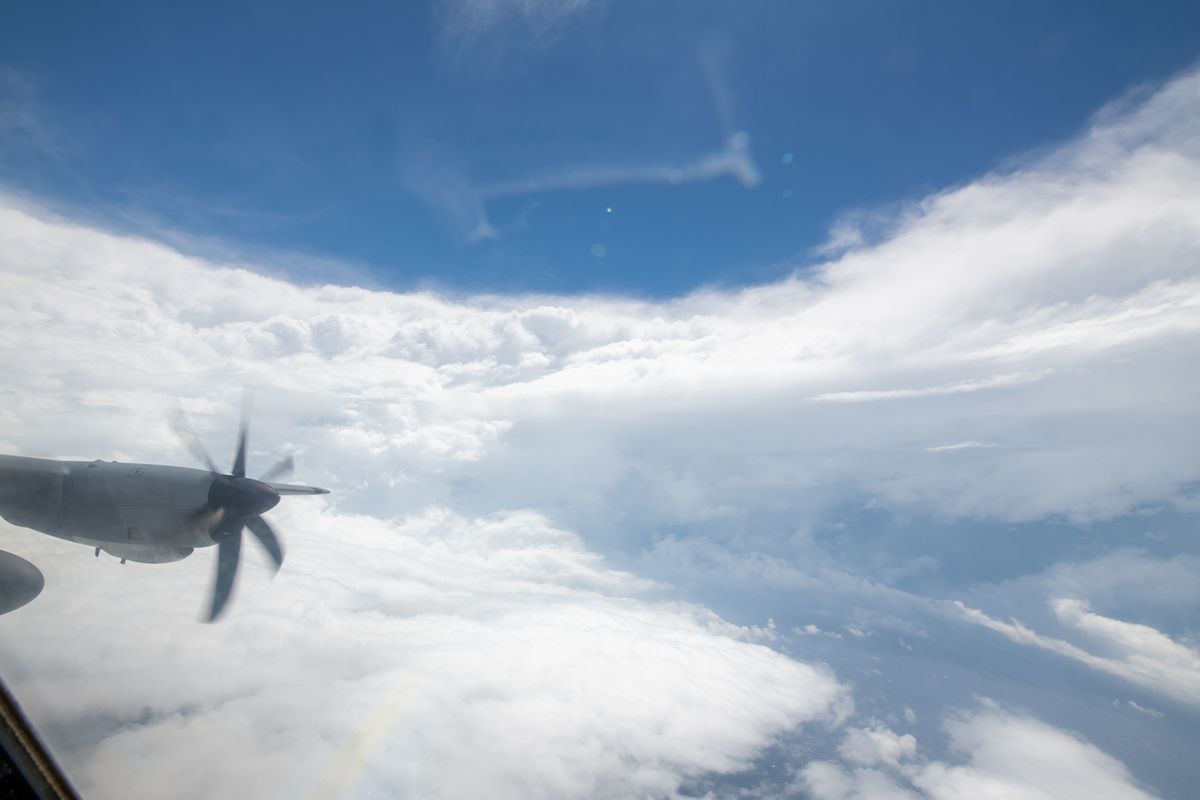Inside violent Ian, a hurricane-hunter pilot ‘never felt so small’

The pilot has zipped through hurricanes for a decade, in an Air Force career that has spanned so many operations that it’s impossible for Maj. Kendall Dunn to recollect exactly how many sorties he has flown.
His flight early Wednesday, a mission to pierce the eye of Hurricane Ian and gather vital data for weather scientists, will probably stay with Dunn for some time, he said. And that is sort of the problem.
“I kind of want to write this one out of my head so I can keep doing this job,” Dunn said in an interview, still coming down from what he described as the single most turbulent flight he has ever experienced. “We literally got rocked.”
Dunn is the chief pilot for the Mississippi-based 53rd Weather Reconnaissance Squadron. He had already flown several flights into Hurricane Fiona, a storm that lashed Puerto Rico with disastrous floods, before getting an assignment as flight commander of an WC-130J aircraft flying into the next big storm. By Wednesday, he had been on nine flights in 12 days, he said, each one a multi-hour marathon of airframe-shaking missions to vacuum up as much data as possible.
Few military operations are more urgent and timely for civilians than hurricane hunting, which helps the National Hurricane Center assess where storms are going and how severe they are and will be - a vital piece in forecasts and disaster preparation. The modified Super Hercules is a flying weather instrument, with a crew of eight singularly focused on providing real-time information that can elude satellites. The crew fires a dropsonde, a tubelike device about the size of a paper towel roll that collects data such as dew point, pressure, temperature, wind speed and direction as it descends on a small parachute.
Flights conducted in tandem by the National Oceanic and Atmospheric Administration fill in other weather information, helping unlock the characteristics of the storm. But scientists at the National Hurricane Center also rely on analysis of what the crew sees with their own eyes, Dunn said, including indications of severity, such as the presence of hail. Studying the disturbances up close reveals the storms’ personalities, he said.
“You got to hug somebody to really get to know them,” he said. “That’s what we do. We hug hurricanes. And so we get to know them intimately.”
Flying into the eye is an important part of the mission, which helps mark the precise location of the storm center. The eye itself is a serene vortex. The hard part is getting there through the chaotic veil of the eyewall.
C-130s are big, powerful planes, Dunn said, but Hurricane Ian overpowered the aircraft, with the feeling at one point of being in the grip of a large hand. People were vomiting in the back as the pilot who was at the controls for the worst of it, Maj. Forrest Heintz, focused on keeping the plane upright. Such turbulence can be so disorienting that pilots lose sense of where they are, and Dunn helped feed information to Heintz while providing backup on the controls if the fight became too much.
“I’ve never felt so small,” Dunn said.
The lightning was so intense that it felt like stumbling face-first into a mob of paparazzi, he said, painting the eyewall in gorgeous but foreboding tones. The breaking daylight comes as a relief, Dunn said, because it helps erase the unsettling sight of lightning bolts.
The flight returned to Keesler Air Force Base in Biloxi, Miss., after the roughly 10-hour mission. While Dunn is a full-time member of the Air Force Reserve unit, other crew members serve part time, keeping up with civilian occupations and their families until the call comes to staff another hurricane-hunter flight. Then, suddenly, they dive into another historic tempest.
“I don’t know if there is a more rewarding job,” Dunn said.